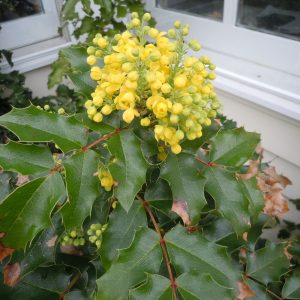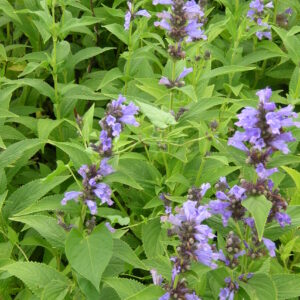"New" Heirloom Plants
Showing 33–40 of 62 results
-
Lathyrus japonicus v. maritimus Beach pea Z 3-6
Magenta pea flowers June through August on its trailing stems. A legume, it puts nitrogen in the soil fertilizing plants growing nearby.
OUT OF STOCK – EMAIL FOR AVAILABILITY
Magenta pea flowers June through August on its trailing stems. A legume, it puts nitrogen in the soil fertilizing plants growing nearby.
Size: 18-24” tall but lays on ground, not upright
Care: sun in well-drained soil. Drought tolerant.
Native: all northern states from the Atlantic to the Pacific, Wisconsin native. (It seems strange that a variety of a plant native to Japan grows as a native in North America. The species, although named “Japonica” is circumpolar, native in the entire northern hemisphere.)
Wildlife Value: pollinated by bees, primarily bumblebeesIroquois cooked the stalks and leaves to remedy rheumatism. Taxonomic mess. First described and named in 1735 then another name in 1824, now changed again to its current name.
-
Ligularia japonica syn. Ligularia kaempferi syn. Farfugium japonicum Leopard plant
Cutleaf bold foliage, golden yellow-orange daisy-like flowers in late summer
OUT OF STOCK
Cutleaf bold foliage, golden yellow-orange daisy-like flowers in late summer
Size: 4’ x 12”
Care: part shade in moist, fertile soil
Native: Japan, China & KoreaCollected and identified by Europeans before 1841. July 6, 1872 The Garden reported that it bloomed in London.
-
Ligularia siberica Z. 3-8
Spikes of yellow daisies atop a clump of bold, round leaves from June to August
OUT OF STOCK
Spikes of yellow daisies atop a clump of bold, round leaves from June to August
Size: 3-4' x 2’
Care: sun to shade in moist soil
Native: from France to JapanThis species in gardens before 1750. It was the 1st species of the genus, named by Linnaeus in 1753. Father of perennial borders, William Robinson: “Fine leaved and worth growing.” L.H. Bailey: “Said to be a showy marsh plant.”
-
Lobelia siphilitica ‘Alba’ z 4-8
Striking, erect spike of pure ivory blossoms opening from bottom up. On top club-shaped buds, below trumpet-shapes made of a tube flaring open at the ends with the top of the flare looking like a quarter moon with the circle at the bottom and the lower divided into three, each segment pointed at the ends. Its fresh white blooms stand out in late summer to early fall.
OUT OF STOCK
Striking, erect spike of pure ivory blossoms opening from bottom up. On top club-shaped buds, below trumpet-shapes made of a tube flaring open at the ends with the top of the flare looking like a quarter moon with the circle at the bottom and the lower divided into three, each segment pointed at the ends. Its fresh white blooms stand out in late summer to early fall.
Size: 2-3’ x 1-2’
Care: sun to part shade in moist or moist well-drained soil
Wildlife Value: Deer resistant, attracts bees, hummingbirds and some butterflies.This white one is “An albino of occasional occurrence.” Britton, Nathaniel Lord “On the Naming of ‘Forms,’ in the New Jersey Catalogue” Bulletin of the Torrey Botanical Club 17: 121,125. 1890. This may, therefore, be native in the same locations as the blue species or it may not.
-
Mahonia aquifolium Oregon grape Z 5-9
Clusters of buttercup yellow flowers in spring followed by glaucous blue fruit with red stems. Holly-like, evergreen leaves turn purple in fall for a four-season ornament.
Clusters of buttercup yellow flowers in spring followed by glaucous blue fruit with red stems. Holly-like, evergreen leaves turn purple in fall for a four-season ornament.
Size: 5’ x 3’
Care: sheltered site (in Z 5) in humusy, moist to moist well-drained soil, sun to part shade
Native: Pacific Northwest
Wildlife Value: Attracts bees & butterflies, Birds eat the berriesSnohomish ate the berries and made a yellow dye from its roots. It cured bloodshot eyes and kidney disease for Okanagan-Colville. California’s Karok Indians boiled the root and drank the liquid to cure numerous ailments. Steamed roots and leaves believed to remedy yellow fever. Lakota Sioux treated stomach, digestive, kidney and breathing ailments with this. Mahonia is named in honor of Bernard McMahon, (1775-1816) Scottish nurseryman who immigrated to Philadelphia around 1802. McMahon’s nursery received some seeds of plants and plants discovered by Lewis & Clark who collected this plant in April 1806 along the rapids of the Columbia River.
-
Melampodium leucanthum Blackfoot daisy Z 5-10
No fail low mounds of up to 50 small white daisies spring-fall, atop narrow, hairy, grey-green leaves
OUT OF STOCK
No fail low mounds of up to 50 small white daisies spring-fall, atop narrow, hairy, grey-green leaves
Size: 6-10” x 12-20”
Care: sun to part-shade in well-drained soil. Its tap root reaches down for moisture and hair on foliage protects if from desiccating winds and sun - xeric plant
Native: Colorado, Oklahoma, TX &AZ (no wonder it likes well drained soil) but perfectly happy as far north as 20° below zero in winter.
Wildlife Value: birds eat seeds –pollen and nectar attract bees and butterflies. Deer resistantBotany professor John Riddell found this in Texas, Described in Flora of North America, 1842.
-
Mimulus lewisii syn. Erythyranthe lewisii Lewis’ Monkeyflower Z 5-9
Bright rose trumpets with hairy yellow throats, flowers all summer
Bright rose trumpets with hairy yellow throats, flowers summer
Size: 2-3’ x 12"
Care: sun to part shade in moist to moist well-drained soil
Native: Alaska to California and as far west as Colorado
Wildlife Value: Nectar for hummingbirds and bees
Awards: Royal Horticultural Society Award of MeritFirst collected by Meriwether Lewis on the Lewis & Clark Expedition “on the head springs of the Missouri, at the foot of Portage hill,” in August 1805.
-
Nepeta subsessilis Japanese catmint Z 4-8
Showy bluish purple spikes of bell-shaped flowers, June-September
Showy bluish purple spikes of bell-shaped flowers, June-September
Size: 18-24” x 18-24”
Care: sun to part shade in moist to moist well-drained soil
Native: Japan
Wildlife Value: deer & rabbit resistant, attracts butterfliesSubsessilis means nearly without stalks. Catmints contain various amounts of an essential oil (nepetalactone) both a cat stimulant and a mosquito repellant. From Nambu Japan where botanists called it Miso-gawa- sô. Von Siebold, German botanist and physician, who worked in Japan from 1823 to1830 saw it. Named in Bull. Acad. Imp. Sci. Saint-Pétersbourg, sér. 3, 20: 469. (1875) by Russian botanist Karl Maximowicz.



